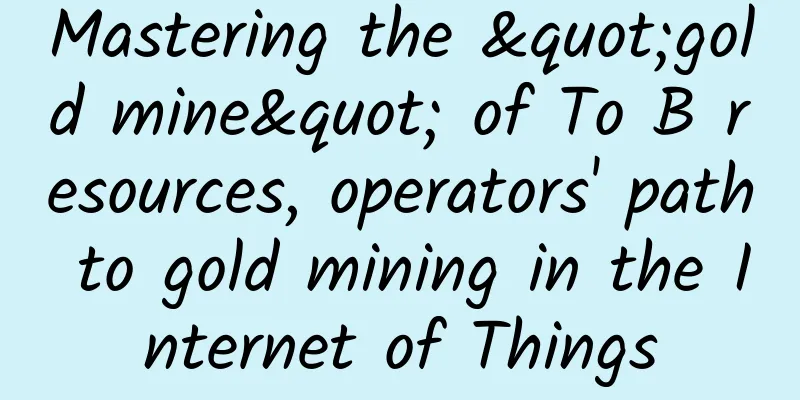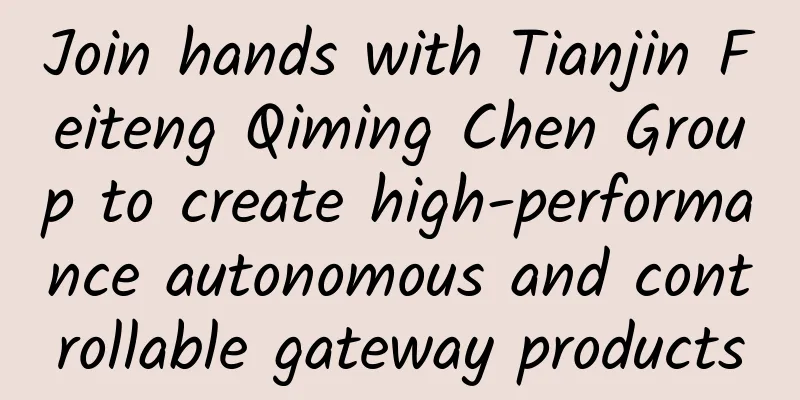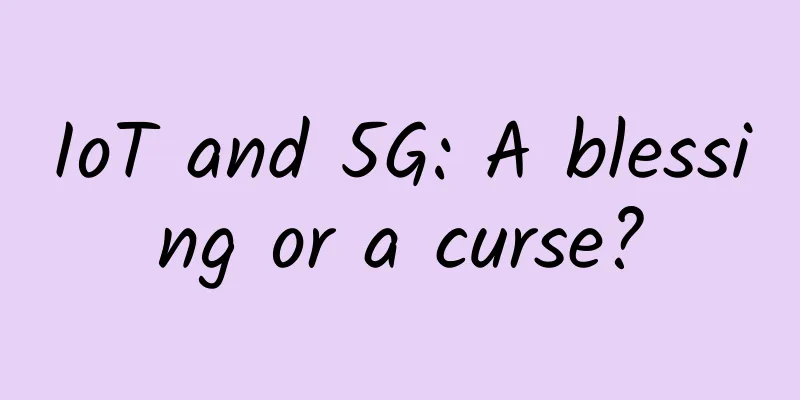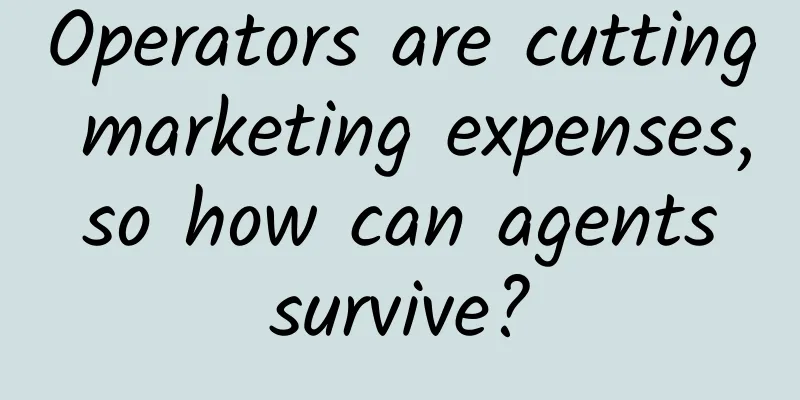Mastering the "gold mine" of To B resources, operators' path to gold mining in the Internet of Things

|
Last week, in the article "Why has the Internet of Things become a 'luxury business' for global operators?", I analyzed the situation of telecom operators in developing Internet of Things business from three aspects: number of connections, revenue, and investment. After the article was published, many friends who work in operator companies called me to discuss this topic.
At present, most of the operators' IoT business belongs to government business. Compared with personal mobile phones and home broadband, this is a typical To B business. In the past few years, operators have also invested a lot of energy in developing To B customers. Since 2018, developing To B business has become one of the hottest topics in the technology field. From communicating with operators, I realized that the millions of government and enterprise customers formed and maintained by each domestic telecom operator over the years have become its To B resource "gold mine", forming a natural first-mover advantage over other forms of technology companies. Driven by this round of To B tide, telecom operators' To B-based revenue will become one of the new growth points. However, product development, personnel structure and value to users in this process are challenges faced by operators. This week, I will first review the operators' To B resources. In the eyes of the public, telecom operators operate wireless and wired communications businesses, and their customers are mainly individual mobile phone customers and home broadband customers. Due to the existence of the demographic dividend, the three major domestic operators have hundreds of millions of customers. However, the special communication needs of a large number of governments, institutions, and enterprises in various industries have become the "government and enterprise customers" group of telecom operators. At present, the three major domestic operators have special government and enterprise customer branches or government and enterprise customer divisions at the group level, and there are corresponding government and enterprise customer departments at the provincial and municipal company levels. Driven by this organizational structure and the needs of a large number of government and enterprise customers, after more than ten years of operation, the operators have formed rich To B resources. Compared with other technology companies, it can be said that they have a To B "gold mine". First, government and enterprise customers bring a lot of To B revenue to operators In recent years, with the saturation of mobile phone users and the implementation of speed increase and fee reduction, the growth rate of operators' personal wireless business revenue has become slower and slower, while To B government business revenue has shown a rapid growth trend. The author consulted the annual financial reports publicly released by the three major operators in recent years. China Mobile clearly listed its revenue generated through the government and enterprise market. For example, the situation in 2017 is as follows: China Mobile's government and enterprise revenue (Source: China Mobile's performance report, unit: 100 million yuan) In 2017, China Mobile achieved 67.628 billion yuan in revenue from government and enterprise customers, a year-on-year increase of 32.1%. During the same period, the personal mobile market (mainly personal mobile phone users) had revenue of more than 500 billion yuan, but the growth rate was only 2.2%. Although the 67.628 billion yuan from the government and enterprise market accounted for 10.1% of China Mobile's overall revenue, the growth rate of more than 32% is enough to ensure that its share of total revenue continues to rise rapidly. In addition to the growth rate, the proportion of the incremental part of To B business to the overall incremental part of China Mobile is also worth noting. In 2017, China Mobile's total revenue from communication services increased by 44.8 billion yuan compared with 2016, and among these new amounts, government business revenue accounted for 36.6%. In the financial report released in the middle of 2018, this figure rose to 37.5%. In other words, the incremental part of China Mobile's incremental revenue, To B's incremental share has exceeded one-third, which can be said to be the main driving force for incremental revenue. China Mobile's incremental revenue structure in 2017 (Source: China Mobile's performance report) Since China Mobile has determined the "four-wheel drive" strategy, namely the integrated development of the personal market, family market, government and enterprise market, and new business market, the data of these four markets are listed separately in the financial report. Although China Unicom and China Telecom's financial reports are not listed in this structure, it can be seen from the various descriptions in the financial reports that their To B businesses are also developing rapidly and their contribution to the overall corporate revenue is increasing. For example, China Unicom's financial report lists the statistics of its "Industrial Internet Business". In 2017, China Unicom's Industrial Internet business revenue was 15.907 billion yuan, with a growth rate of 17.4%. In 2017, China Unicom's total revenue was 274.829 billion yuan, with a growth rate of only 0.2%. Against the background of an overall growth rate of 0.2%, the 17.4% growth rate formed by the Industrial Internet is undoubtedly a bright spot. China Unicom expects that this area will account for 15% of total revenue by 2020. China Unicom's Industrial Internet Revenue (Source: China Unicom's Performance Report) In recent years, China Telecom has launched the strategy of emerging ICT ecosystem in the government and enterprise business field. In 2017, China Telecom's overall revenue growth rate was only 3.9%, but the revenue of the emerging ICT ecosystem increased by 20% year-on-year. Among them, IDC business revenue increased by 20% year-on-year, cloud business revenue increased by 62% year-on-year, big data business revenue increased by 88% year-on-year, and IoT ecosystem revenue increased by nearly 200% year-on-year. Secondly, the number of To B customers and service personnel is huge The resources of operators in the To B field are also reflected in their large customer base and service personnel base. Take China Mobile as an example. By the end of 2017, the number of China Mobile's government and enterprise customers reached 6.02 million, and there were 9 industry applications with annual revenue exceeding 100 million yuan. It can be said that the development of the To B field has achieved initial results. China Telecom and China Unicom have not publicly released the number of their government and enterprise customers, but it is certain that the scale of their To B customers is in the billions, which is not available for other technology companies that are entering the To B field. China Telecom is an operator that has been serving government and enterprise customers for a long time, and has a deeper foundation in To B business, so it has very strong technical and support capabilities for government and enterprise customers. For example, China Telecom has established a nationwide VIP service team, 60,000 exclusive account managers across the country, and 80,000 customer technical service personnel. Compared with other cloud service providers or To B manufacturers, this support team is difficult to achieve in the short term. Although the operators have not announced the distribution of employees in each business line, the organizational structure of the operators can show the layout of service personnel in various fields. Each operator has subsidiaries covering 31 provinces across the country, and the organizational structure extends to the county. Each branch has a dedicated government and enterprise account manager, forming direct contact with local major government agencies, institutions and enterprises. This layout is also difficult for other technology companies to form. Each operator has tens of thousands of front-line marketing personnel covering major local enterprises and institutions. Through this grid structure, almost all government agencies and all leading companies in the industry have purchased one or more of the operator's group SMS, wireless Internet access, dedicated lines, IDC and other products, forming the information technology expenditure of government and enterprise units. Secondly, the stickiness of government and enterprise customers is formed by the attributes of the enterprise The attributes of telecom operators as central enterprises have enabled them to build a strong trust in the information services provided to a large number of government and enterprise customers, especially in the key business assurance of the government and large enterprises, which has increased customer stickiness, and these are also important contents of their To B resources. ***In large-scale ceremonies, conferences and events, we can see that operators play the role of communication assurance; some large customers' information transformation business often chooses operators as the general contractor.
For example, I have participated in the Internet of Things consulting business of Xinjiang operators. A division of the Corps carried out a field drip irrigation project. Among multiple suppliers, the operator was directly selected as the unified planning and organization unit of the entire project. The operator organized the industrial chain enterprises to complete the implementation and delivery of the project. Although the products that the operator can provide in this project are IoT cards and communication pipelines, the demand of the Corps users is the implementation of end-to-end projects. Similar situations give operators strong customer stickiness and lay a good foundation for their To B layout. At present, Internet companies have begun to enter the To B field. Operators have abundant ready-made To B resources. If these To B customers can be persuaded to make repeat purchases, operators will form a new rapid growth point against the background of declining ARPU values of personal mobile phones and home broadband. This is a process of transformation from standardized products to diversified products. In this process, the product form, personnel capabilities and thinking mode will change. The Internet of Things is a typical To B business in this transformation. In fact, as the article last week believed, the Internet of Things is a "luxury business" for operators. Mastering abundant To B resources is an important condition for operators to develop the Internet of Things. This resource constitutes a threshold of "luxury". In the next article, the author will continue to explore various problems in the process of operators expanding the Internet of Things business with the help of the "gold mine" of To B resources. Welcome to leave a message and make suggestions. |
<<: 5 ways 5G will change the world
>>: 8 Software-Based Network Trends for 2019
Recommend
Building a new digital paradigm and creating new industry value | Huawei works with partners to create and promote 100 typical scenario-based solutions
[Shanghai, China, September 23, 2020] During HUAW...
I'm stunned! Why is the latency so high for a simple HTTP call?
Recently, a strange phenomenon occurred during pr...
The three major cloud service giants join forces with telecom operators to participate in the battle for the 5G market
Connectivity services have become even more impor...
Mobile layout: Do you enter from a single point or start with the platform?
Mobility has become a standard feature of enterpr...
IDC: Enterprise WLAN market grew strongly in the third quarter
The global consumer and enterprise wireless LAN (...
Industrial Internet + 5G, we must plan carefully before taking action
In the previous article, "IoT operating syst...
Basic forms of edge computing in the 5G era
Cloud computing is based on technologies such as ...
In the new era, how can operators seize the opportunity of industrial Internet?
2020 is the year when 5G enters large-scale appli...
How can you explain the communication protocol in such a simple way?
This article is reprinted from the WeChat public ...
More than 1,100 projects! These fields are being quietly changed by 5G
The number of terminal connections exceeds 180 mi...
Confirmed! Can you still access the 5G network without a 5G package? The deduction rules have been released
Expensive 5G plans After entering 2020, 5G has be...
The rapid development of 5G technology brings more innovative applications to the automotive industry
Industry experts point out that in order to meet ...
HostKvm: $5.6/month KVM-2GB/40GB/500GB/Australia VPS
HostKvm is also an early Chinese hosting company,...
5G development has entered a critical period, and the following major applications are worth paying attention to in 2021
Since its official commercial launch in 2019, aft...
Detailed explanation of the "three-way handshake" and "four-way wave" of TCP connection
1. TCP connection In the process of sending and r...









